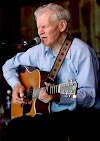2012 end of the world
Mayan calendar end of the world 2012
 Mayan calendar end of the world 2012
Mayan calendar end of the world 2012Dec. 21 began out as the prophetic day some had considered would guide in the fantastic end around the globe. By Saturday mid-day, it had become more comedian than cosmic, the point of plenty of Facebook or myspace content and at least several number of T-shirts.
At the remains of the historical Mayan town of Chichen Itza, countless numbers chanted, danced and otherwise frolicked around ceremonial shoots and pyramids to level the summary of a wide, 5,125-year pattern in the Mayan schedule.
The doomsayers who had expected apocalypse were nowhere to be seen. Instead, individuals revealed up in T-shirts studying "The End of the World: I Was There."
Vendors desperate to offer their clay handcraft and wood made covers known as out to moving guests, "Buy something before the globe finishes."
And on Tweets, (hash)EndoftheWorld had become one of the daily most well-known hash labels.
- Hundreds arrested in China over doomsday rumors
- How the Mayan calendar actually works
- 12-21-12: End-of-the-world predictions big business for some
For the masses in the ruins, Dec. 21 sparked celebration of what they saw as the birth of a new and better age. It was also inspiration for massive clouds of patchouli and marijuana smoke and a chorus of conch calls at the break of dawn.
The official crowd count stood at 20,000 as of mid-afternoon, with people continuing to arrive. That surpassed the count on an average day but not as many as have gathered at the ruins during equinoxes.
The boisterous gathering Friday included Buddhists, pagan nature worshippers, druids and followers of Aztec and Maya religious traditions. Some kneeled in attitudes of prayer, some seated with arms outstretched in positions of meditation, all facing El Castillo, the massive main pyramid.
Ceremonies were being held at different sides of the pyramid, including one led by a music group that belted out American blues and reggae-inspired chants. Others involved yelping and shouting, and drumming and dance, such as one ceremony led by spiritual master Ollin Yolotzin.
The boisterous crowd included Buddhists, pagan nature worshippers, druids and followers of Aztec and Maya religious traditions. Some kneeled in attitudes of prayer, some seated with arms outstretched in positions of meditation, all facing El Castillo, the massive main pyramid.
"The world was never going to end, this was an invention of the mass media," said Yolotzin, who leads the Aztec ritual dance group Cuautli-balam. "It is going to be a good era. ... We are going to be better."
Ivan Gutierrez, a 37-year-old artist who lives in the nearby village, stood before the pyramid and blew a low, sonorous blast on a conch horn. "It has already arrived, we are already in it," he said of the new era. "We are in a frequency of love, we are in a new vibration."
But it was unclear how long the love would last: A security guard quickly came over and asked him to stop blowing his conch shell, enforcing the ruin site's ban on holding ceremonies without previous permits.
2012 end of the world
apocalypse
end of the world 2012
end of world
Entertainment
mayan apocalypse
Mayan calendar
mayan calendar 2012
mayan end of the world
mayans
nasa
News



